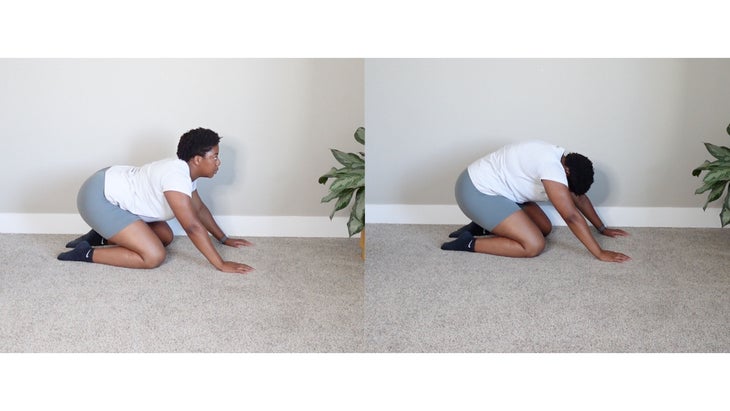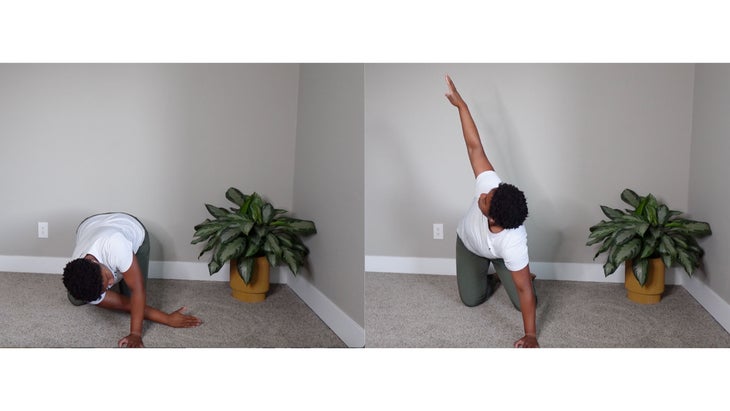3 Thoracic Mobility Exercises to Improve Your Posture and Form
You likely spend most of your day sitting at your computer, scrolling through your phone, or lounging on your couch. And while these are not bad positions, slouching for extended periods of time can result in stiffness or immobility in your thoracic spine.
Why Is Thoracic Mobility Important?
Your thoracic spine is the section of your spine that runs down your upper and middle back. If you’re an athlete or active person, thoracic mobility is critical for lifting weights with proper form, doing activities that require overhead extension (such as tennis), and even maintaining proper breathing techniques.
Without thoracic mobility, you may experience back pain or see a drop in your athletic performance.
3 Thoracic Mobility Exercises
As with strengthening exercises, seeing improvements in your mobility takes time. If you want to work on building your thoracic mobility, commit to doing these exercises three to four times a week for at least four weeks. If you’re more focused on maintaining your current mobility, try adding these movements into your current workout routine one to two times a week.

1. Cat-Camel Stretch with a Thoracic Focus
You may be familiar with this common stretch, but this variation specifically targets your thoracic spine. By sitting back onto your heels in this movement, you’ll lock out your lower back, giving you the ability to focus on your thoracic spine.
How to do it:
- Come into a tabletop position. Shift your hips back. They should be stacked above your heels.
- Slowly arch your back and look up toward the ceiling. Hold this position for a second.
- Round your neck, back, and shoulders and shift your gaze toward the floor. Hold this position for a couple seconds.
- Continue moving between these two positions. Make sure to maintain control throughout this movement.
Complete 1-2 sets of 8 to 10 reps.

2. Weighted Thoracic Extension with a Foam Roller
This is one of my favorite exercises to help improve thoracic mobility. For this exercise, you’ll need a foam roller and a light or medium dumbbell.
How to do it:
- Lie on your back. Place your feet on a wall in a reverse tabletop position. Position a foam roller perpendicular to your spine under your upper back.
- Grab a light or medium weight (between 10 and 12 pounds) and position it behind your head. By using the dumbbell, you’ll be able to deepen the stretch, but you can also opt to do this movement without the added weight.
- Slowly roll your spine over the foam roller, feeling a stretch in your upper back. Hold this position for 5 to 10 seconds.
Perform 2 sets of 8 to 10 reps.

3. Thread the Needle
How to do it:
- Start in a tabletop position.
- Lift your right arm up, opening your right shoulder.
- Thread your right arm under your body, rotating your right shoulder to face the opposite direction. Reach your right arm as far as you can.
- Slowly rotate your arm back up toward the ceiling. Keep your gaze on your right thumb.
Repeat this movement 8 to 10 times before switching to your left side. Perform 1-2 sets on each side of your body.